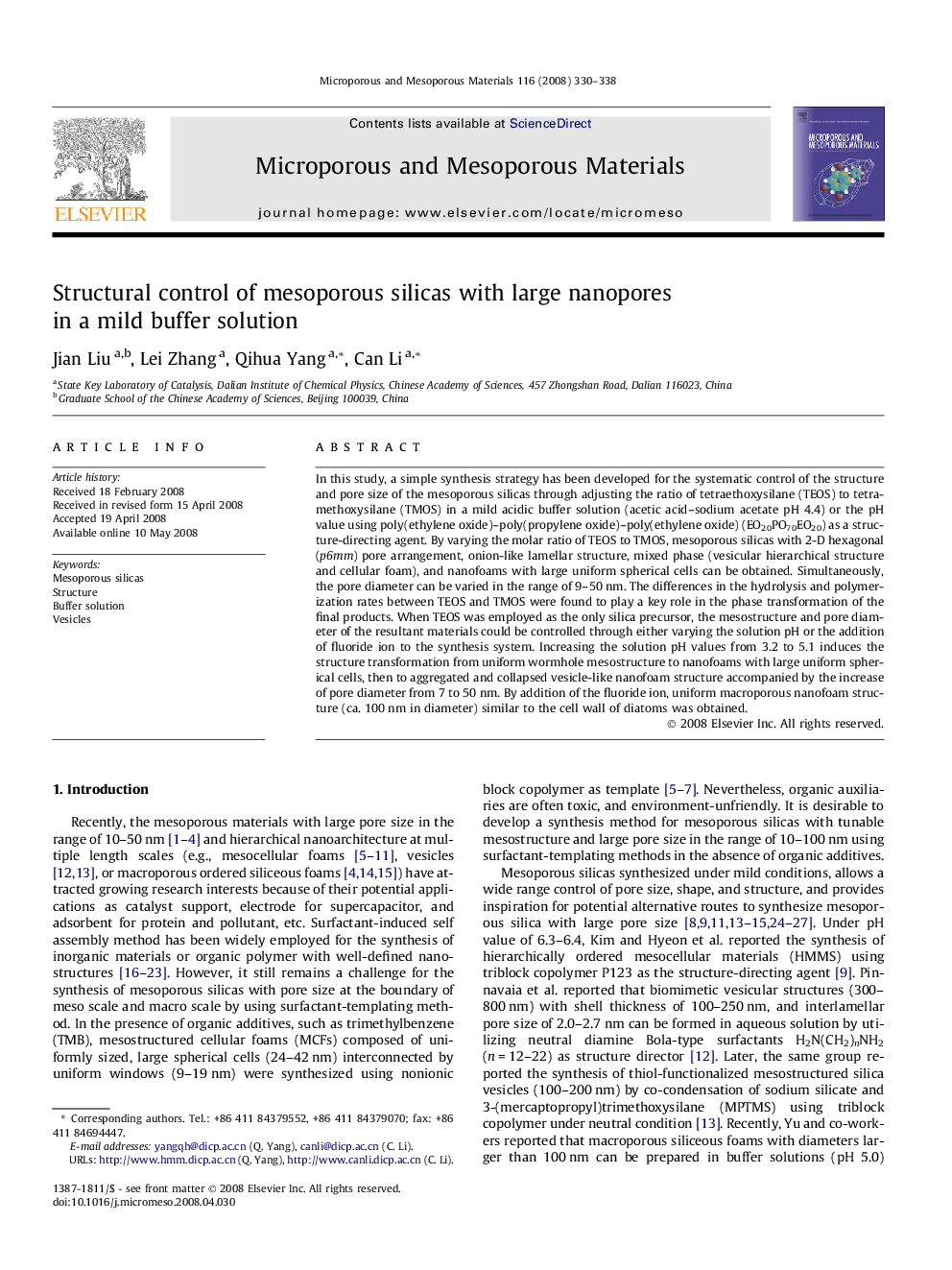| Article ID | Journal | Published Year | Pages | File Type |
|---|---|---|---|---|
| 75248 | Microporous and Mesoporous Materials | 2008 | 9 Pages |
In this study, a simple synthesis strategy has been developed for the systematic control of the structure and pore size of the mesoporous silicas through adjusting the ratio of tetraethoxysilane (TEOS) to tetramethoxysilane (TMOS) in a mild acidic buffer solution (acetic acid–sodium acetate pH 4.4) or the pH value using poly(ethylene oxide)–poly(propylene oxide)–poly(ethylene oxide) (EO20PO70EO20) as a structure-directing agent. By varying the molar ratio of TEOS to TMOS, mesoporous silicas with 2-D hexagonal (p6mm) pore arrangement, onion-like lamellar structure, mixed phase (vesicular hierarchical structure and cellular foam), and nanofoams with large uniform spherical cells can be obtained. Simultaneously, the pore diameter can be varied in the range of 9–50 nm. The differences in the hydrolysis and polymerization rates between TEOS and TMOS were found to play a key role in the phase transformation of the final products. When TEOS was employed as the only silica precursor, the mesostructure and pore diameter of the resultant materials could be controlled through either varying the solution pH or the addition of fluoride ion to the synthesis system. Increasing the solution pH values from 3.2 to 5.1 induces the structure transformation from uniform wormhole mesostructure to nanofoams with large uniform spherical cells, then to aggregated and collapsed vesicle-like nanofoam structure accompanied by the increase of pore diameter from 7 to 50 nm. By addition of the fluoride ion, uniform macroporous nanofoam structure (ca. 100 nm in diameter) similar to the cell wall of diatoms was obtained.
